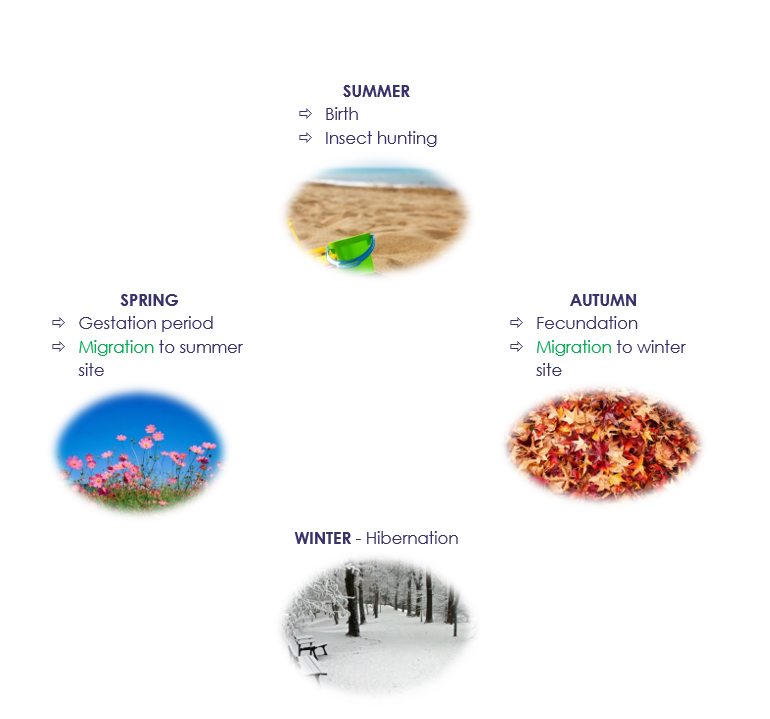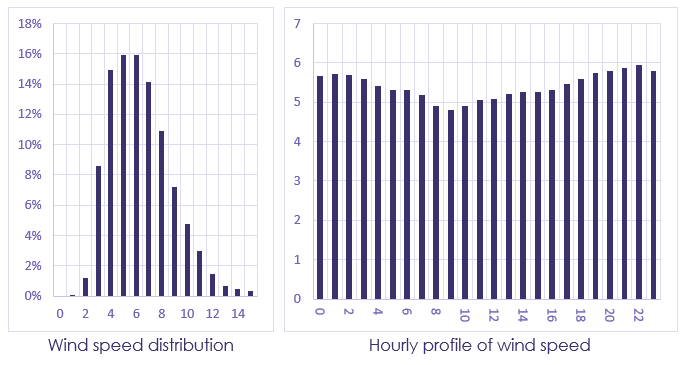When developing a wind farm project, one criterion for the environmental acceptability concerns the avifauna impact study. Turbine positions are controlled not to be on migration corridors nor on local species’ hunting territory. In some cases, compensatory actions can be offered to obtain the administrative authorization.
During the operational phase of the project, the French governmental order of August 26th, 2011 on establishments classified for environmental protection (ICPE) imposes a long-term follow-up to estimate the impact of wind turbines on bird and bat fatalities. Until now, post-construction avifauna studies have not lead to restriction. However, with environmental regulations getting more drastic, reading of avifauna studies will lead to more severe impacts on existing wind farms in the near future.
This note aims to improve knowledge on bats, demonstrate the financial impact of changes in regulations with effective solutions to minimize the corresponding loss of revenue. The article has a strong focus on the French market.
Biography of a misunderstood animal
Europe has more than 30 different species of bats, which are all protected by law since 1981. This animal has an important role in the ecological balance since one bat can eat until 600 insects per night.
Bats use the echolocation system for their spatial orientation. In this way, they are particularly sensitive to variations in pressure that could sometimes lead to fatal barotrauma. Bats have the particularity to lower their internal temperature during winter to go into hibernation until spring.
- Bat reproduction cycle
With only one birth per year and two migration periods, bats have a reproduction cycle that makes the species vulnerable, however counterbalanced thanks to their average long lifetime (~30 years).

- Interaction with wind turbines
On the basis of a rotating movement, the wind turbine creates important air displacements which are associated to large pressure variations. Thus, the risk of collisions and barotrauma for bats increases as the wind energy sector extends, leading to increasing concerns and changes in regulations to preserve the species from extinction.
Changes in regulations
In some French regions, wind farms under development must comply with the curtailment plan enforced by the local administration Decree.
In a near future, results from ICPE studies for operational wind farms will lead to similar measures.
In this context, it is important for asset owners to anticipate financial impacts & be aware of the solutions available to prevent loss of revenue. SOLUTIONS
Several approaches have already been explored to design ultrasonic systems able to keep bats away from wind turbines. However, results were not satisfactory enough to develop such solution at an industrial level.
Curtailment plan seems to be the most effective solution that is systematically chosen by the administration.
Case study
The standard curtailment plan that can be easily imposed consists in increasing the turbine cut-in wind speed to 5 m/s or 6 m/s when bats are the most active, i.e. early at night and/or when environmental conditions are compliant with bats’ operating mode (no rain, low wind, temperature above 12°C).
This type of curtailment plan reduces the bat mortality by more than 50%. In some cases, results from this avoidance strategy can reach 90% of success.
However, without any additional sensors, this type of curtailment plan can have a detrimental effect on budget with a production loss between 3% and 4% per year.
- Standard case
As an example, the following distribution and hourly profile are considered to estimate the loss of revenue due to increasing cut-in wind speed to 6 m/s, from April to October, between 7pm and 2am (this time window is wide enough to systematically cover the first 4 hours after sunset of the concerned semester).

It leads to production losses of about 3%.
- Optimized case
All turbine manufacturers are working on modules, integrating sensors to curtail wind turbines at times and environmental conditions with high risk of bat mortality. Some companies, specialised in environment, are also working on this type of technology to compete with turbine manufacturers. Now assuming that the wind farm is equipped with a dedicated bat system that enables a real-time turbine control, the production losses will be reduced to less than 1.0%.
Initial investment for this type of system is estimated to be around 30k€ per wind turbine. In some cases, the installation can be limited to only one turbine. In case you would be interested in installing such a module, Greensolver could help you estimate the balance between the CAPEX costs and the return on investment depending on the production profile of the concerned asset. In parallel, Greensolver can also be of assistance during the negotiation phase.
Conclusion
The protection of wild fauna with a particular focus on bats, is an increasing concern , worth being considered by wind farm operators and owners as regulations are getting tougher. In the coming years, there is no doubt that the environmental agency will impose more severe restrictions for the conservation of bats. In this context, it is important to find the most adapted system to minimize loss of revenue. With many years of experience in operating wind farms and the constant quest of innovative solutions, Greensolver can assist you finding the system adapted to your site at lower cost. Do not hesitate to contact us.

